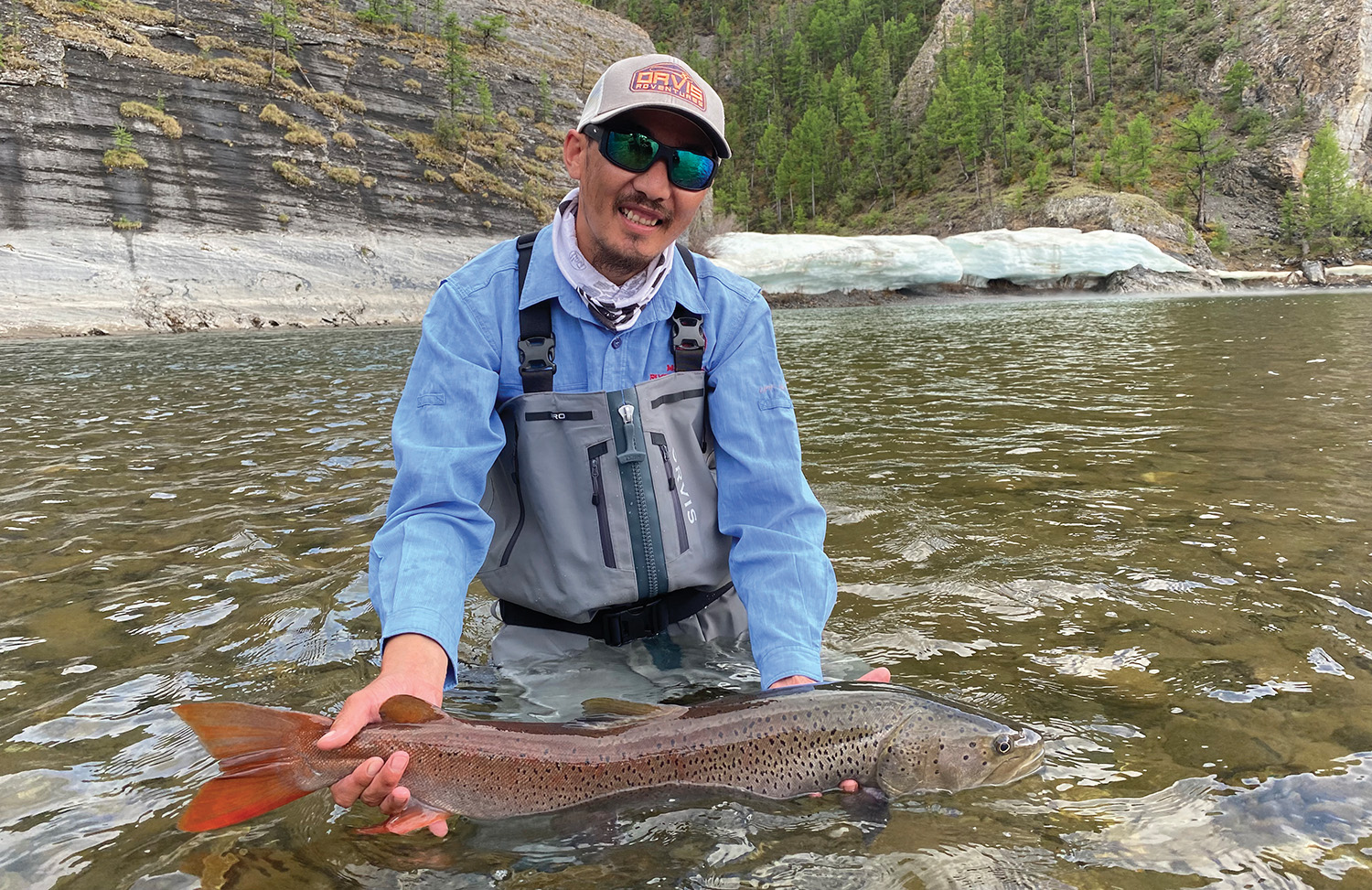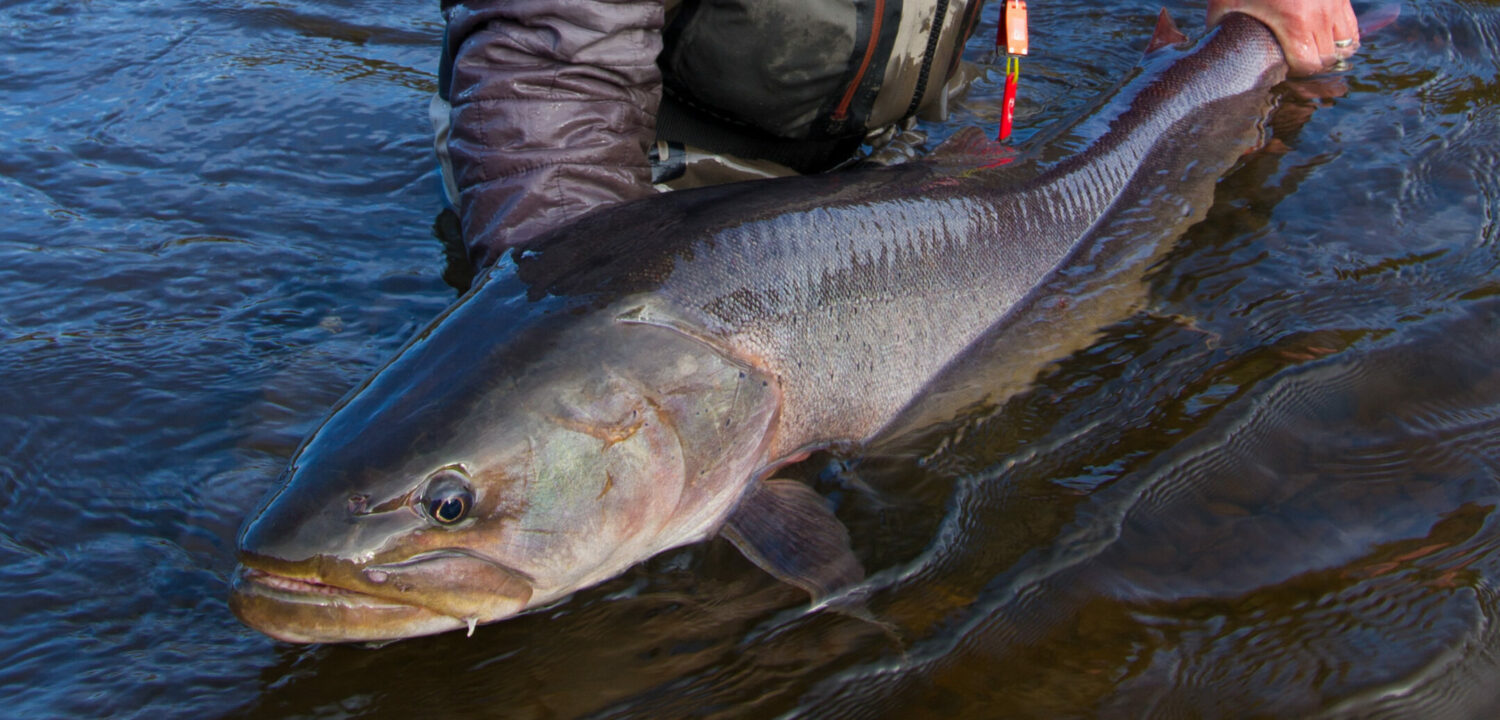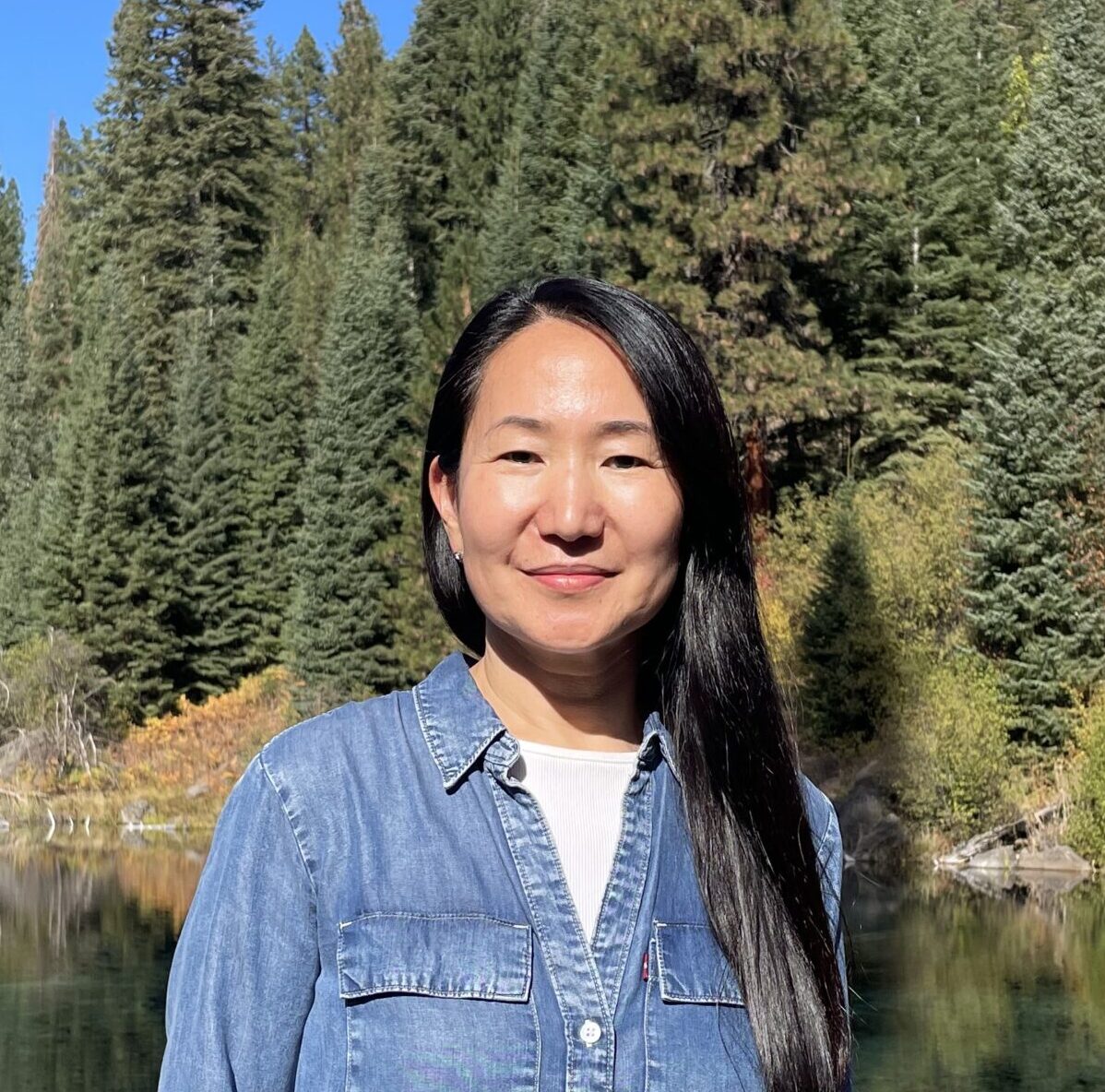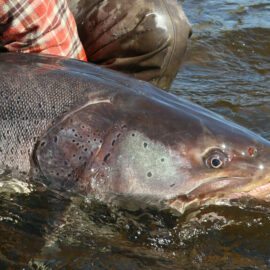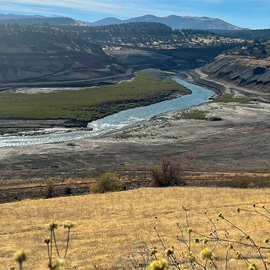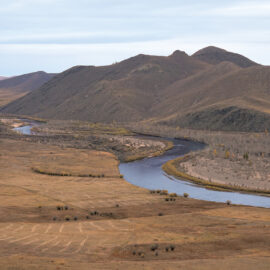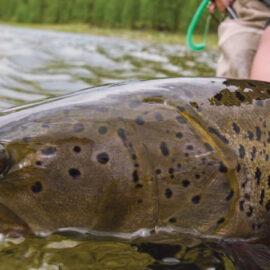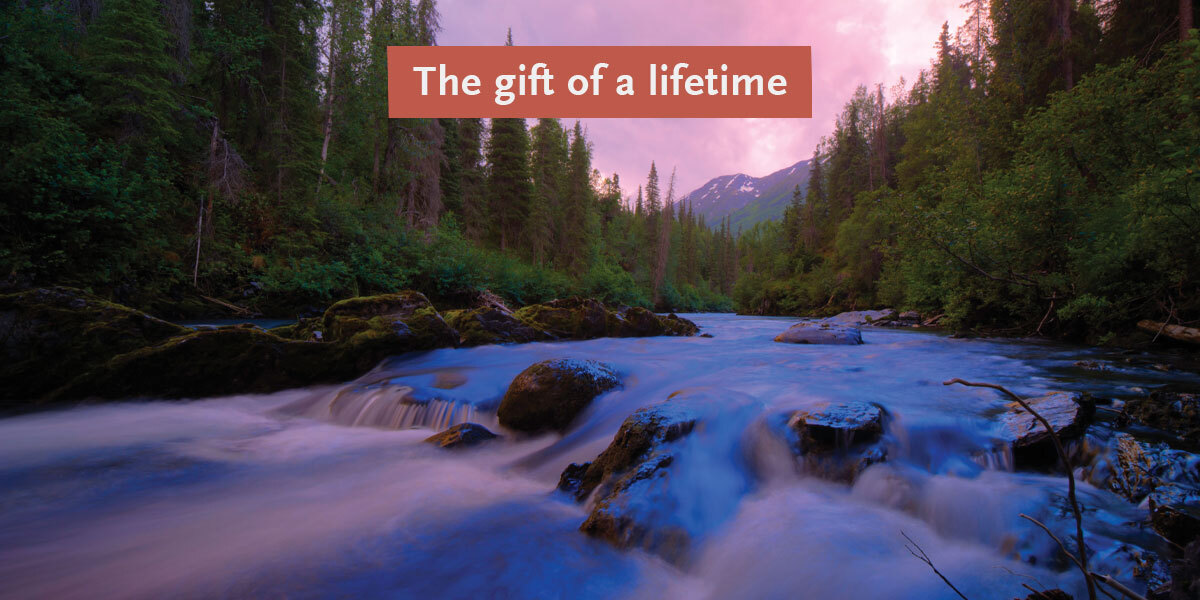Cross-border collaboration for taimen—”river tigers” of the East.
A group of ancient species that occupy a unique ecological niche, taimen are the largest salmonids in the world. Taimen can live over 30 years and reach 6 feet in length and over 100 pounds in weight. Due to their voracious appetite and their place at the top of the food chain (some feed on ducklings and adult Pacific salmon), taimen are sometimes called “river wolves” or “river tigers.” Because taimen reach maturity later and live longer than other salmonids, they are also more sensitive to changes in their environment and serve as an important indicator of the health of the great rivers of Asia and Europe.
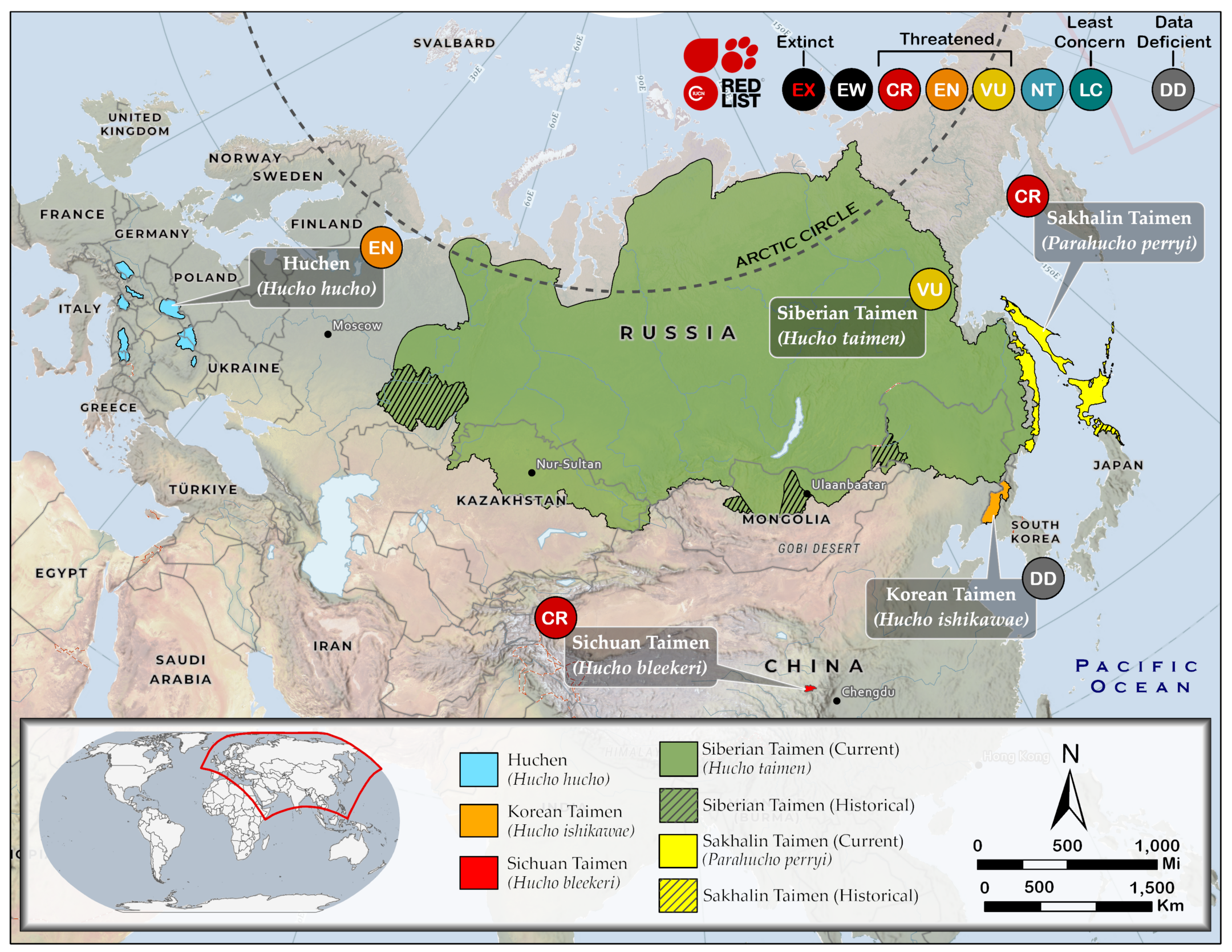
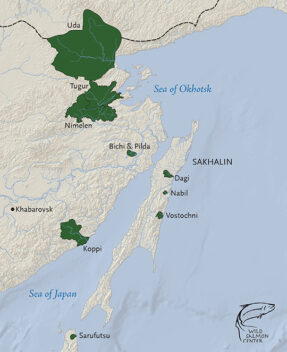
Taimen face habitat loss and unsustainable fishing pressure on their native rivers, which span across the Japanese Island of Hokkaido, Russia’s Sakhalin and Kuril Islands and far eastern mainland Russia (see inset map), Mongolia, China, and the Korean peninsula. The International Union for Conservation of Nature (IUCN) considers taimen species status to range from vulnerable to critically endangered. However, because taimen are not a commercially harvested species, they have been poorly studied until recently.
To further understand and conserve taimen, Wild Salmon Center launched an International Taimen Initiative to bring together scientists, resource managers, outfitters, and conservation groups around the Pacific Rim. As part of this initiative, WSC is working on research with the IUCN Salmonid Specialist Group and partners across the Western Pacific. These research efforts are focused on three separate areas:
- Understanding extinction risk and describing ecological and genetic differences among a group of key river populations within their natural range;
- Describing migration, life history patterns, and foodwebs;
- Carrying out river expeditions to monitor key habitats and populations to inform climate vulnerability assessments.
Through community involvement, education and science-based strategies to identify and protect taimen strongholds, we have an important opportunity to protect these critically endangered, flagship species, and to make a lasting contribution to the health of Asia’s remarkable wild salmon ecosystems.
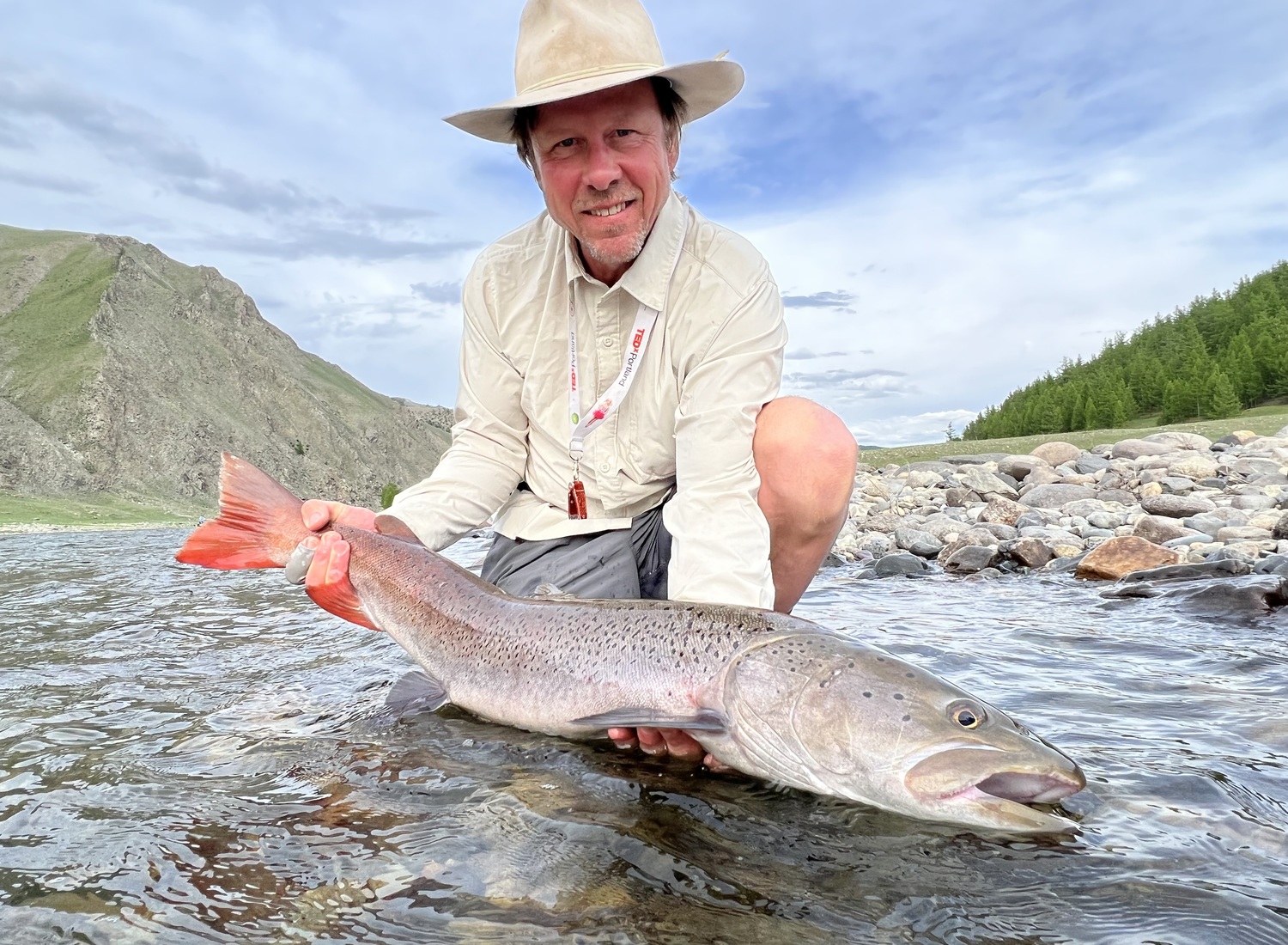
Research and Collaboration
Wild Salmon Center has also begun a new collaboration with the Mongolian Academy of Sciences and Mongolia River Outfitters to conduct cutting-edge taimen research in that country, including research on taimen food webs, taimen physiology and movement, and establishing a climate monitoring network of major river systems. This research aims to understand what taimen need to thrive, especially in the face of a changing climate.
Elsewhere in the Western Pacific, we’ve conducted field studies to better understand the feeding patterns of Siberian taimen (Hucho taimen), which are the only populations that eat returning adult Pacific salmon. We have worked closely with Russian partners to establish protected areas for this species in Khabarovsk, in the lower Amur River region. (Below: WSC’s Guido Rahr travels to the Tugur River deep into the Russian Far East, to the land of taimen.)
WSC helped carry out ten years worth of research to conserve the seagoing Sakhalin taimen (Parahucho perryi), including a two-year study on Japan’s Sarufutsu River. An important component of the research efforts was highlighted in a scientific paper describing Sakhalin taimen extinction risk. The authors identified the crucial role that river floodplains play in conserving this species, especially large lagoons.
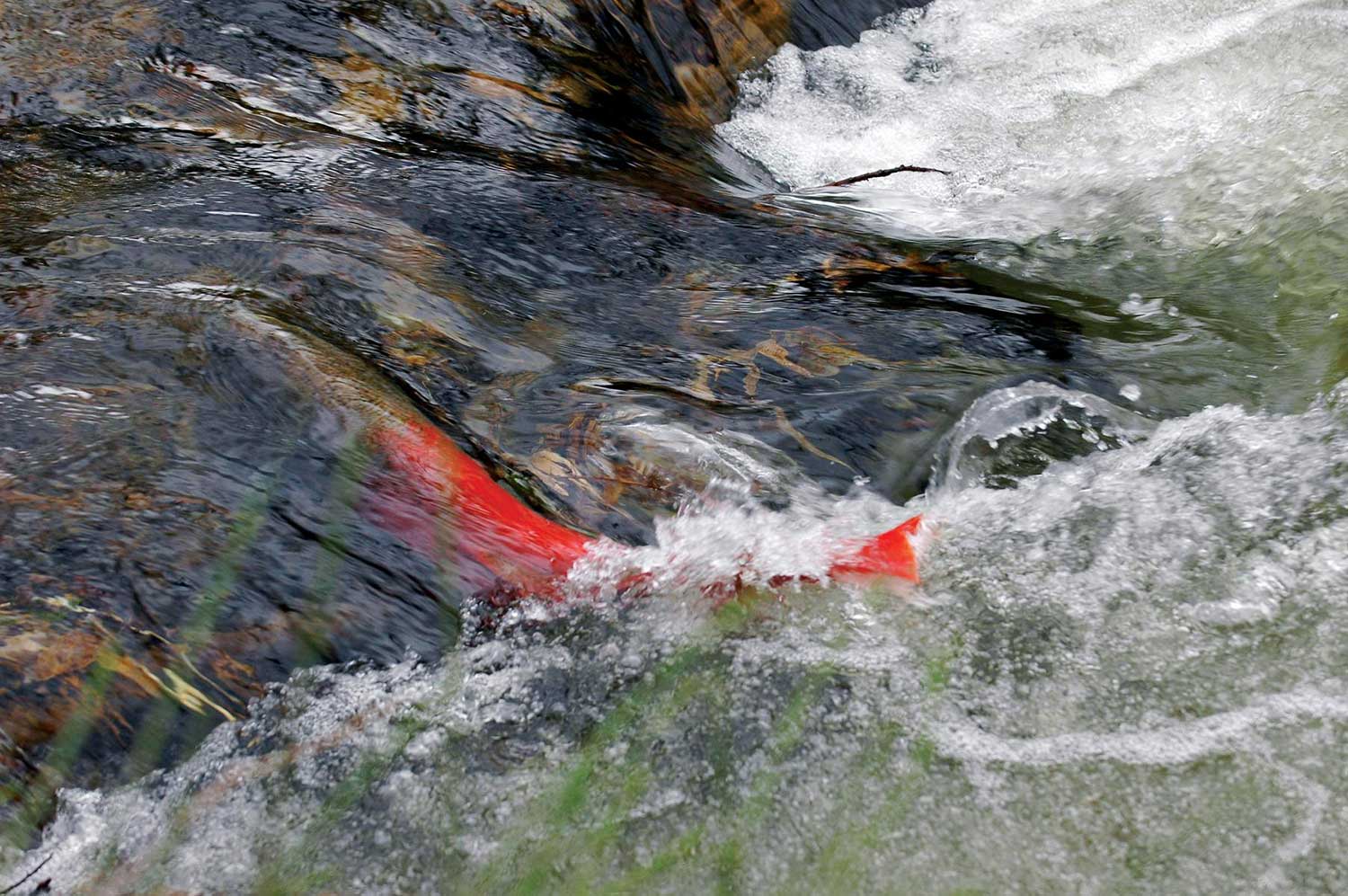
The Koppi River in Khabarovsk is a Sakhalin taimen stronghold, and one of the most biodiverse salmon ecosystem in the world—featuring Amur tigers, Blakiston’s fish owls, Steller’s sea eagles, and Russia’s strongest remaining runs of Sakhalin taimen and Asian masu salmon (also known as cherry salmon). With local partners, we have worked here to secure base levels of protection for the Koppi’s wild fish, including taimen, from headwaters to sea.
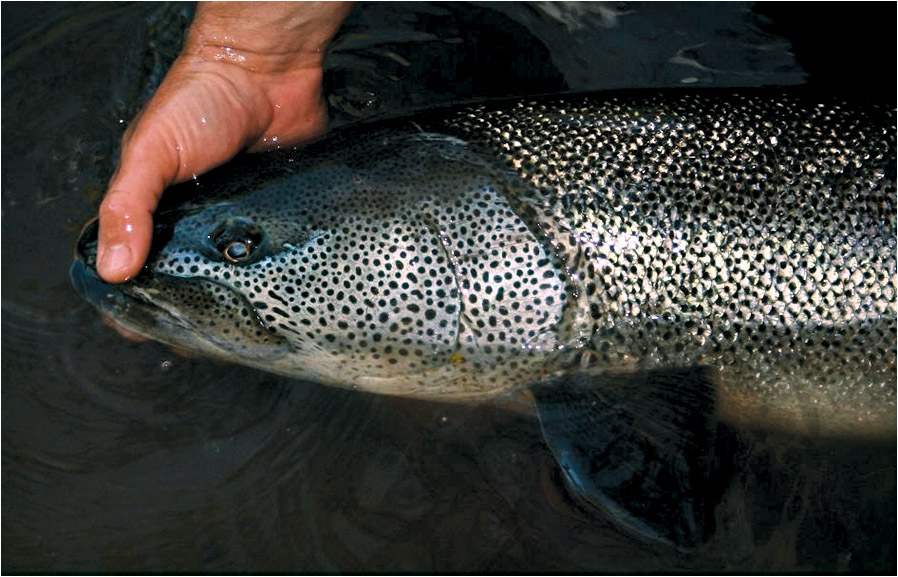
In the coming years, WSC will help to gather international researchers for scientific meetings focused on taimen. We will also bring together outfitters and scientists to expand our network of data collection and educate guides and outfitters on best practices for taimen catch-and-release fishing.
